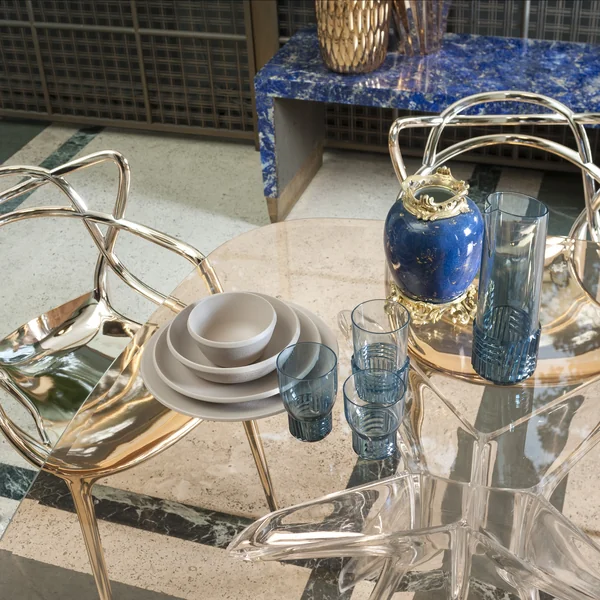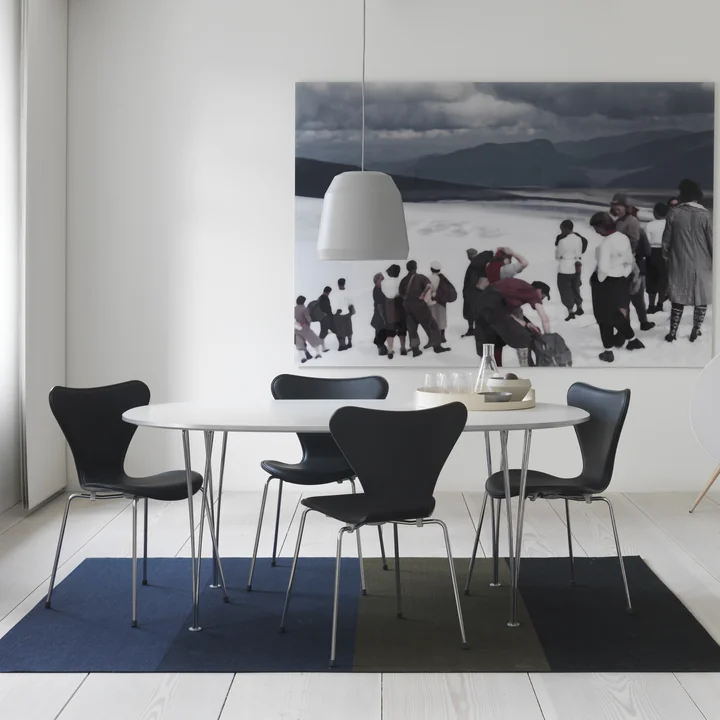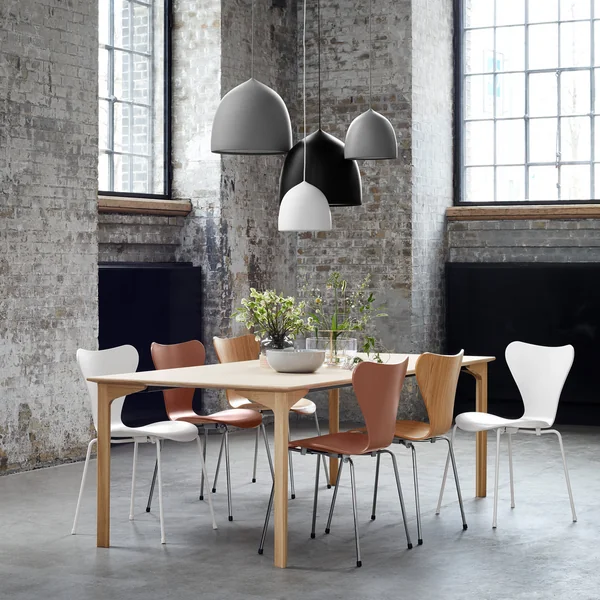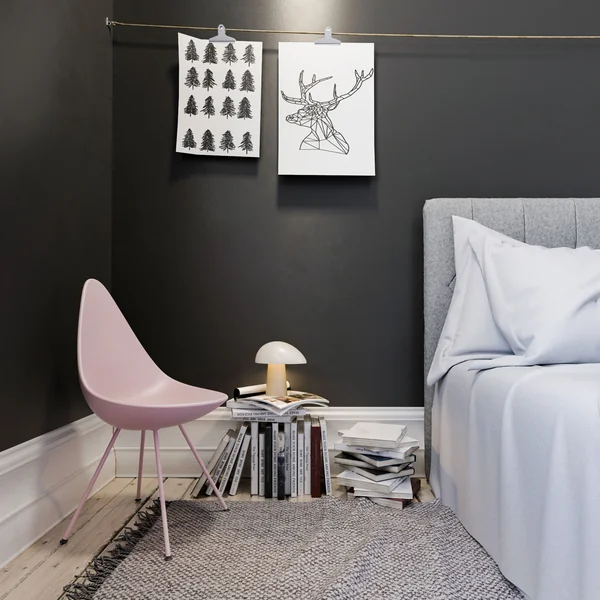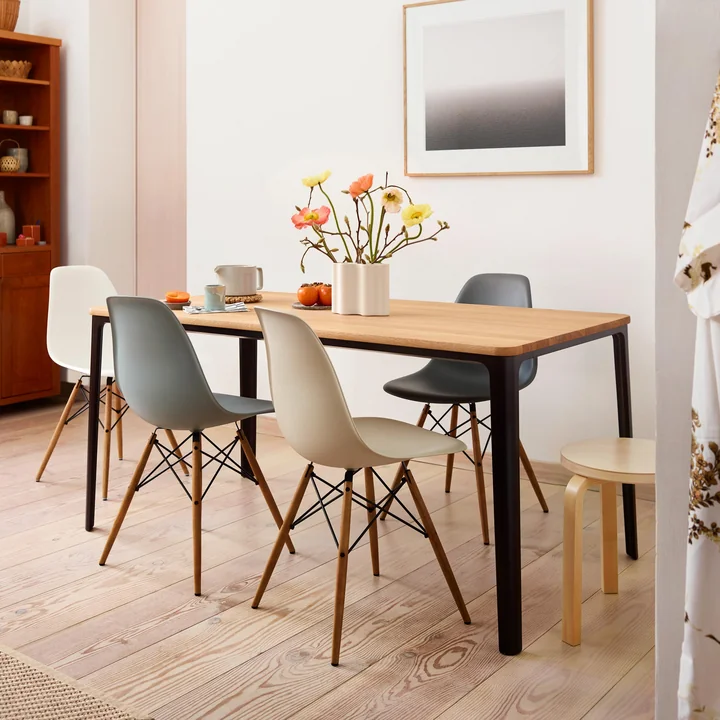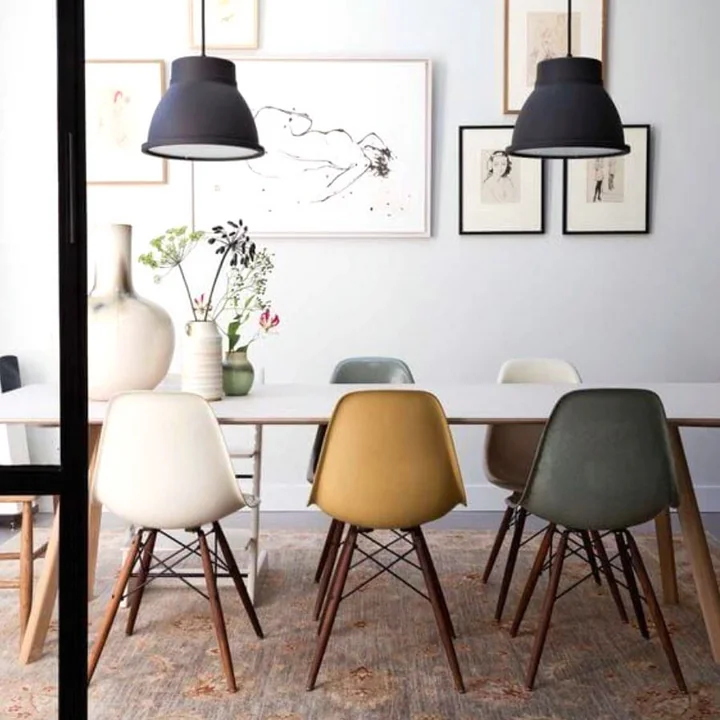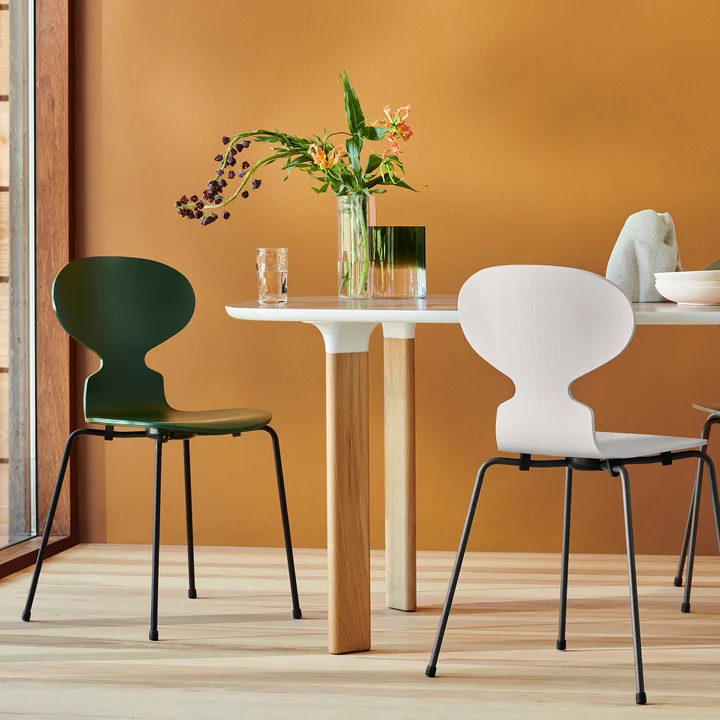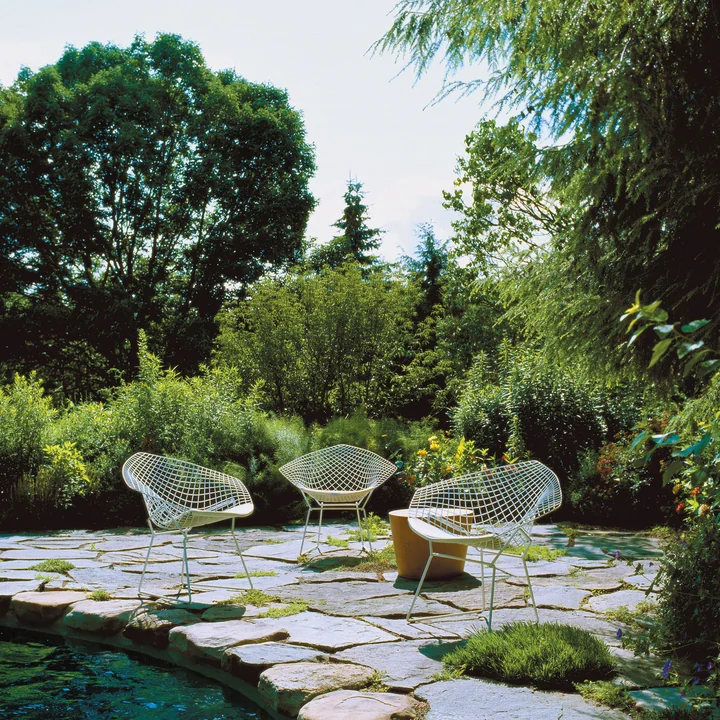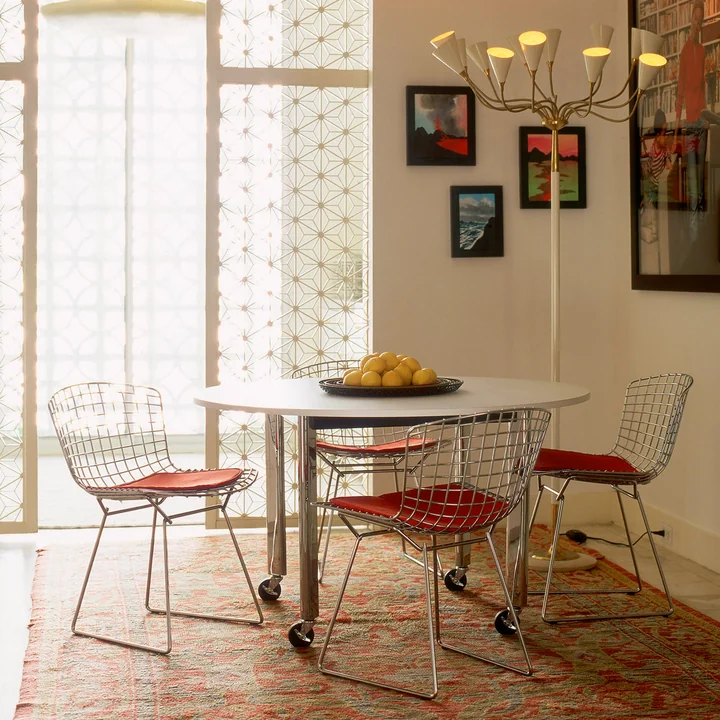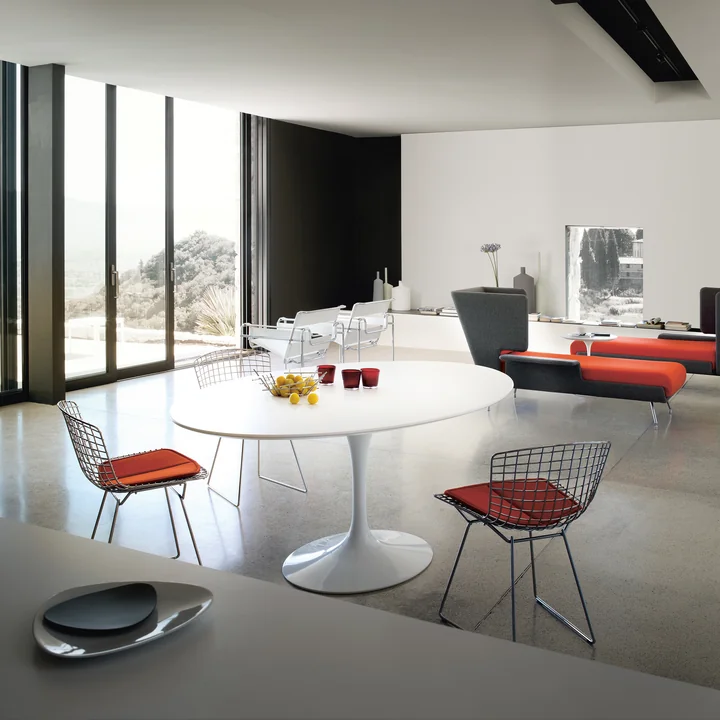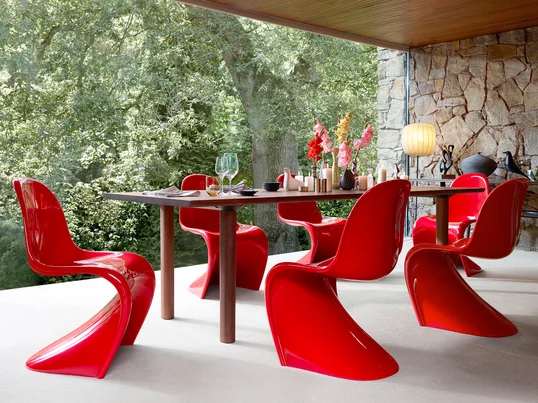Article from the 2021-08-12, of Christian Czok
Retro Chairs: 6 Designs for Creating a Nostalgic Ambience in your Home
Retro furniture has been celebrating a comeback in recent times: properly placed and styled, vintage furniture breathes new life into “old” design classics and creates a warm nostalgic atmosphere in your home. Retro chairs are easily added to a room and can complement the rest of the furnishings to create a completely unique look. Invite your guests on a magic journey through a world of magical and timeless designs. Read on for fantastic design inspiration for retro chairs with a lot of charm, history, and character!
How to create a warm and nostalgic atmosphere with retro chairs in your home:
- Ahead of its Time: The Ant as a Design Pioneer
- Royal Retro Chic: The Chairs of Series 7
- The Drop Chair - in Typical Retro Material Mix
- Vitra Writes History - The Eames Plastic Chair
- Verner Panton's Vision: The Success Story of the Panton Chair
- Industrial Design Reimagined - The Bertoia Chair
Ahead of its Time: The Ant as a Design Pioneer
In cooperation with Fritz Hansen, Jacobsen designed the Ant Chair in 1951. The chair with an extraordinary look and only three legs was at first viewed with utmost skepticism. A common reaction products receive, when they are ahead of their time. Even the Fritz Hansen, the brand who would later cooperate with the artist many more times, was initially doubtful that the chair would be a success and limited production at first to 300 pieces.
Over the years though, the Ant chair has advanced to one of the bestselling chairs in the world, specifically because of its svelte and minimalist design. Today, it is seen as a real retro classic.
Royal Retro Chic: The Chairs of Series 7
Derived from the Ant, in 1955 Jacobsen created the Series 7. Thanks to this collection, the number seven has come to represent timeless elegance and artistic as well as manual skill at the highest level. The designer retro chair enjoys worldwide popularity, which is in some part thanks to Christine Keeler, who as an international supermodel had her photograph taken on the chair in 1963 - an image that spread around the world like wildfire.
The chair can also be found in many public buildings today, including the Guild Hall in Mainz and in the restaurant of the Royal SAS Hotel, which was also designed by Jacobsen. There, the retro chairs decorate the rooms and bring a sense of grace and royal elegance with their appearance.
The Drop Chair - in Typical Retro Material Mix
Three years later in 1958 came another piece, that today enjoys fame as a much-loved retro chair: The Drop Chair. Originally designed for the same hotel and not as a mass product, the chair quickly became a wanted collector's item. It makes an extraordinary statement and enhances the appearance of any room with just its presence. Today there are retro chairs in all sorts of shapes and sizes: whether with fabric or leather upholstery, or in plastic with or without a seat cushion - which is what makes this design into a classic, as it is these materials that define retro furniture.
Vitra Writes History - The Eames Plastic Chair
Retro style means one thing above all: lots of plastic in bright colors. The design brand Vitra captivates with its colorful chairs that always have the highest quality in comfort and appearance. Probably the most famous designer chair with retro charm is the Eames Plastic Chair. It made Charles and Ray Eames the most prominent design personalities of the last century and is an absolute classic in interior design. It was created in 1948 during the MoMa exhibition for "Low Cost Furniture Design" and was put into production only two years later. As the first plastic chair that was ever produced in series, it wrote design history.
Today's realization is the best example of a re-edition for retro chairs: originally it was made with a fiberglass seat, and this has now been replaced with a more environmentally friendly polypropylene plastic, as this is recyclable. But that's not all: the seat is available in countless colors and with and without arm rests.
The frame also offers a variety of possibilities now: from different types of wood to a frame of aluminum - imagination knows no bounds. Vitra adjusted also the chair’s height, as a reaction from Vitra to the increased average body height since the 50s.
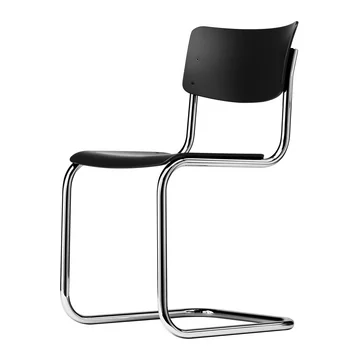 Our recommendations for you:Chairs
Our recommendations for you:Chairs
Verner Panton's Vision: The Success Story of the Panton Chair
Working together, Verner Panton and Vitra created another work of art within the design world in the last century: the Panton Chair. Panton's idea was to create a flowing form from a material and he created the affordable, industrially finished plastic chair. Since its introduction in 1967, the vintage furniture piece has undergone several production phases. The chair's wavy form embraces the body shape, making it particularly comfortable.
Industrial Design Reimagined - The Bertoia Chair
The Bertoia chair, which gets its name from Harry Bertoia, is a beautiful creation for the forward-thinking and innovative style of the 50s. The chair is created through a complicated process by hand. Its rather delicate appearance hides the stability of the chair well.
The vintage piece fits well into many situations, both inside the house and out, and alongside the Diamond Chair belongs to the most famous designs of the 20th Century.
If you liked our 6 retro chairs, take a look through our chairs category for more inspiration and ideas. If you're interested in Retro Design, you can find more information here.
